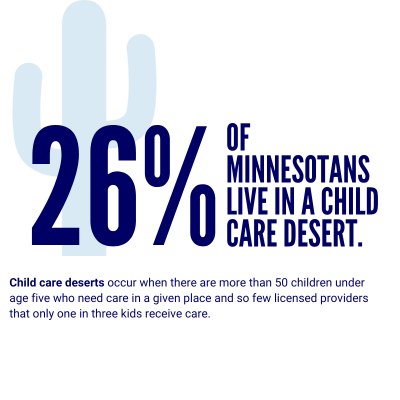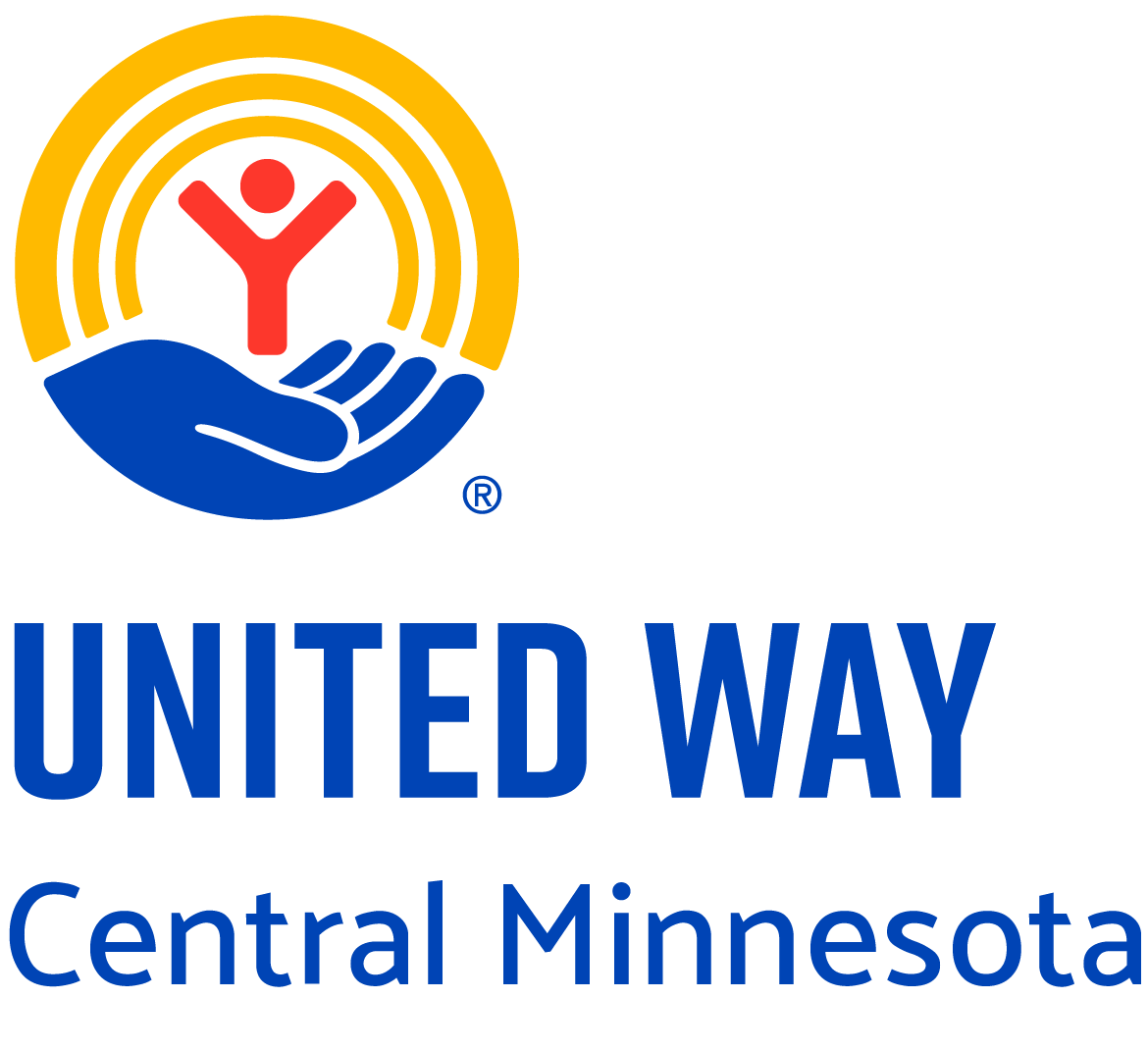
As of 2022, Central Minnesota has 1,316 regulated child care programs, including 113 group child care centers and 1,203 licensed and certified family child care providers.
These programs provide approximately 20,527 child care slots for Central Minnesota’s children, allowing their primary caregivers the flexibility to retain or pursue employment while raising the newest generation of Minnesotan’s . The Child Care Assistance Program or CCAP child subsidy program supports eligible families by funding a portion of the cost of child care while their primary caregivers are working or participating in an approved activity. Partners and providers in this program provide child care for more than 30,000 children every month.
While these numbers mean some families in Minnesota have access to and assistance in paying for child care, a stark gap remains for families and communities where affordable, accessible care is out of reach. The impacts are felt across the state:
- 56% of Central Minnesota children live in families who cannot access regulated child care. This “gap in care” (the number of children who potentially need care, but whose families cannot reasonably access formal care by driving) is larger than the national average.

- Rural communities in the state suffer the brunt of this gap, as visualized in this map of child care deserts in Minnesota. Note: a child care desert is defined as more than three children under the age of 5 years for every one slot at a regulated child care center in a zip code.
- The average monthly price of full-time infant care in a child care center in Central Minnesota is $1,320 per child, which annualizes to $15,840. This compares to the $10,118 cost of in-state tuition and fees for one year at St. Cloud State University,
- Married couple families in Minnesota pay, on average, 13% of their income for child care. Single-parent families pay, on average, 25% of their income for child care.
- Meaningful child care reform that capped families’ child care expenses at 7% of their income (the recommended affordability benchmark as determined by the U.S. Department of Health and Human Services) would save a typical Minnesota family with an infant $10,401 on child care costs. This would free up 17.3% of their (post–child care) annual income to spend on other necessities.
- The cost in Minnesota is $1,341 a month - infant care in Minnesota costs 43.3% more per year than in-state tuition for four-year public college. The federal definition of affordable childcare places costs at 7% or less of annual household income.
A new ReadyNation report shows that the child care crisis costs the national economy $122 billion every year—a figure that has more than doubled since 2018.
Business support of affordable, quality child care can benefit Minnesota businesses by:
-
Reducing worker shortages by allowing more parents to work
-
Increasing employee retention, especially of women
-
Retaining community members
-
Preventing “brain drain”
-
Attracting new businesses and residents to the area
-
Receiving tax incentives and/or write-offs
What Do Businesses Bring to Child Care?
The ability for Central Minnesota businesses to support child care providers is virtually unlimited. A number of opportunities for engagement include:
-
Subsidizing costs
-
Providing on-site child care
-
Offering a child care subsidy to employees
-
Purchasing child care slots in a local child care program
-
-
Investing in child care programs
-
Providing grant funding for capital improvements
-
Offering matching funds to apply for additional funding sources
-
Identifying facilities/buildings, support services, or other resources of benefit to local child care programs
-
-
Supporting child care staff
-
Identifying ways to increase wages and benefits for teacher/staff retention
-
Establishing funding to pay for continuing education or outstanding loans for child care staff
-
-
Advocacy
-
Using your voice and influence to create sustainable improvements through state and local policies that benefit Central Minnesota children and families
-
READ:
-
Childcare is a Business Issue - Harvard Business Review
-
The Parent Trap: Making Child Care Cheaper Could Help Fix Labor Woes - The Cap Times
-
A quiet crisis: Minnesota’s child care shortage - Center For Rural Policy and Development
-
Rural Minnesota child care shortage leaves parents with few choices - MPR News
WATCH:
DO:
- Explore Local Data
- Use the Child Care Aware Data Center to learn about and compare child care access and affordability across the state and by county.
return to main menu
